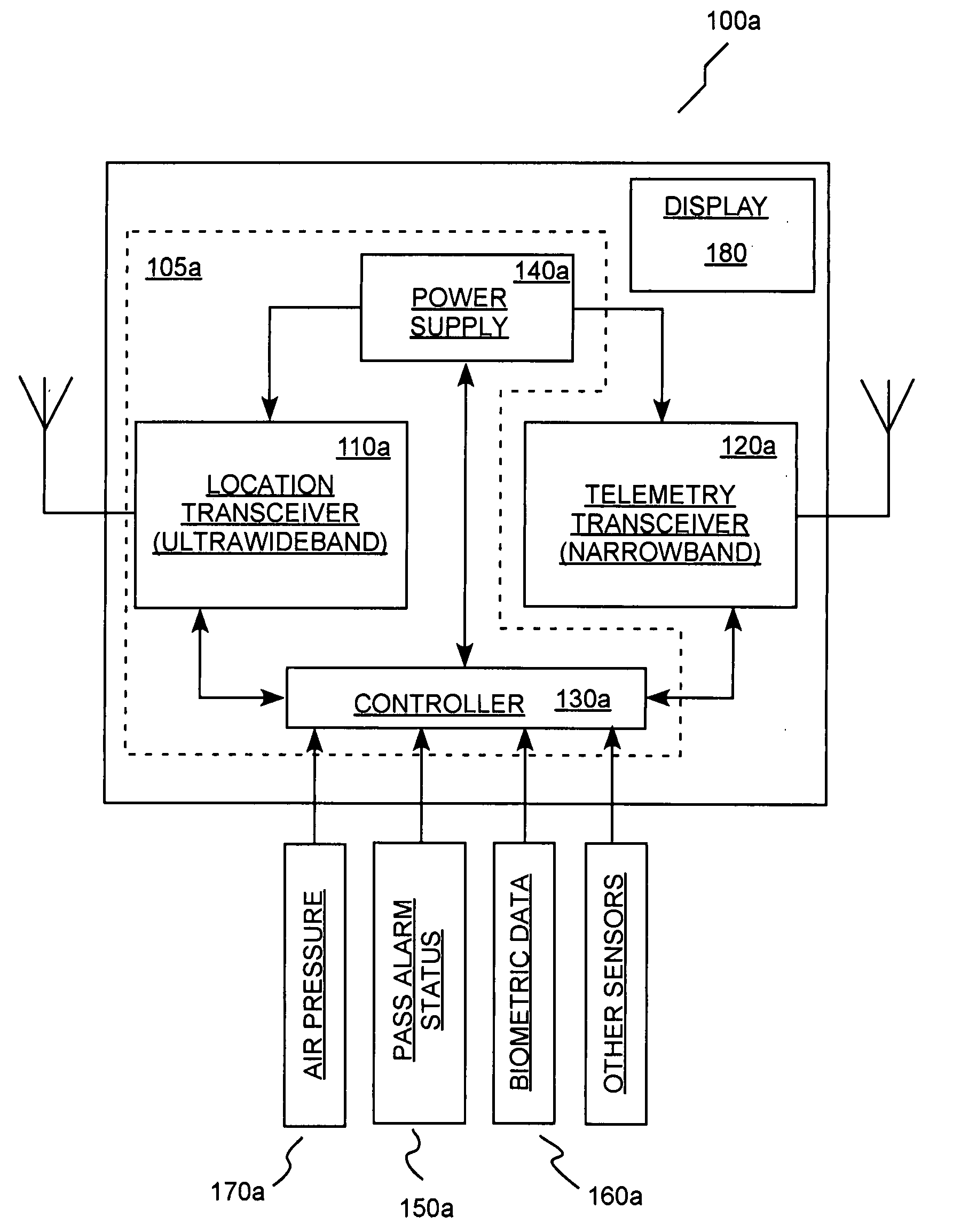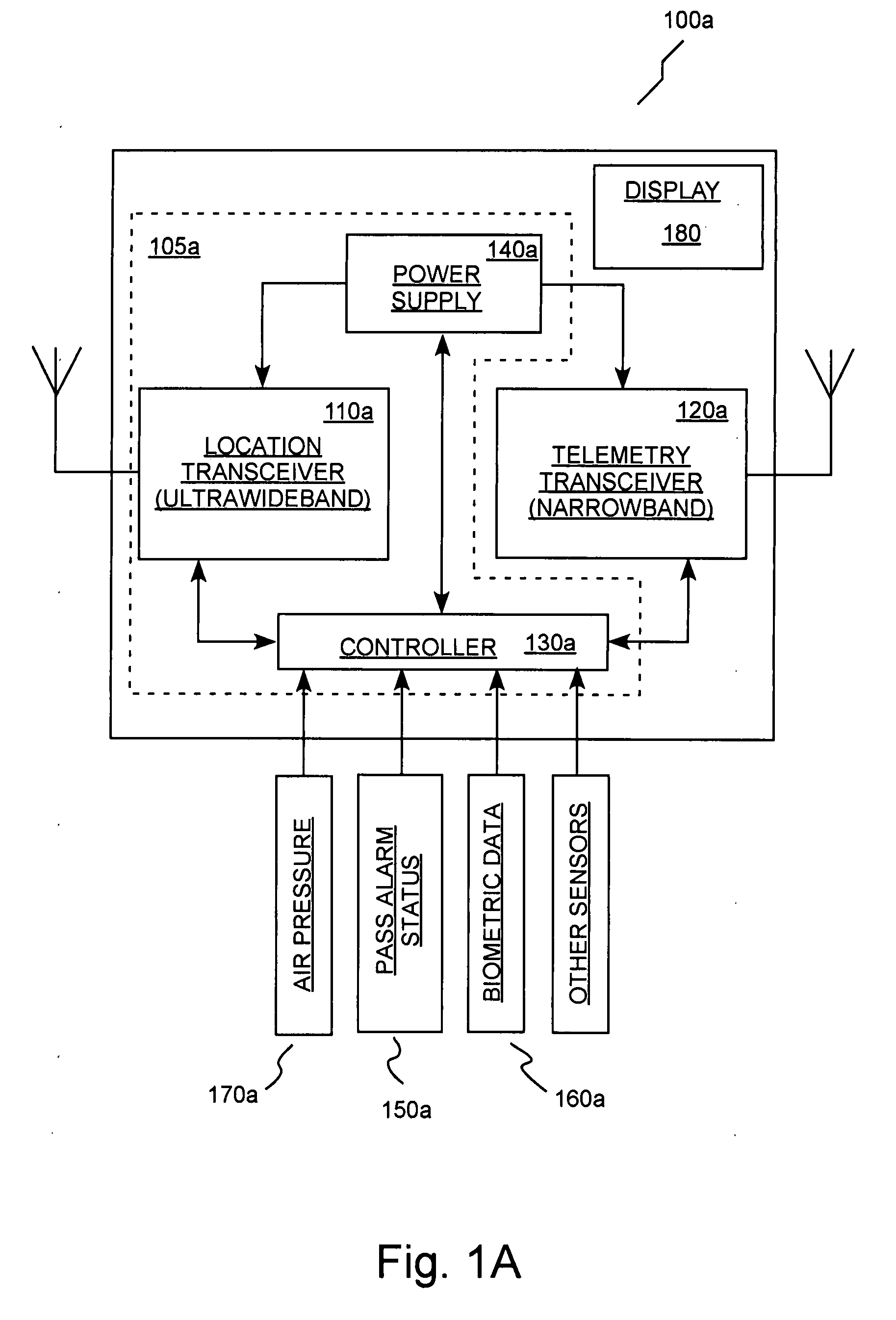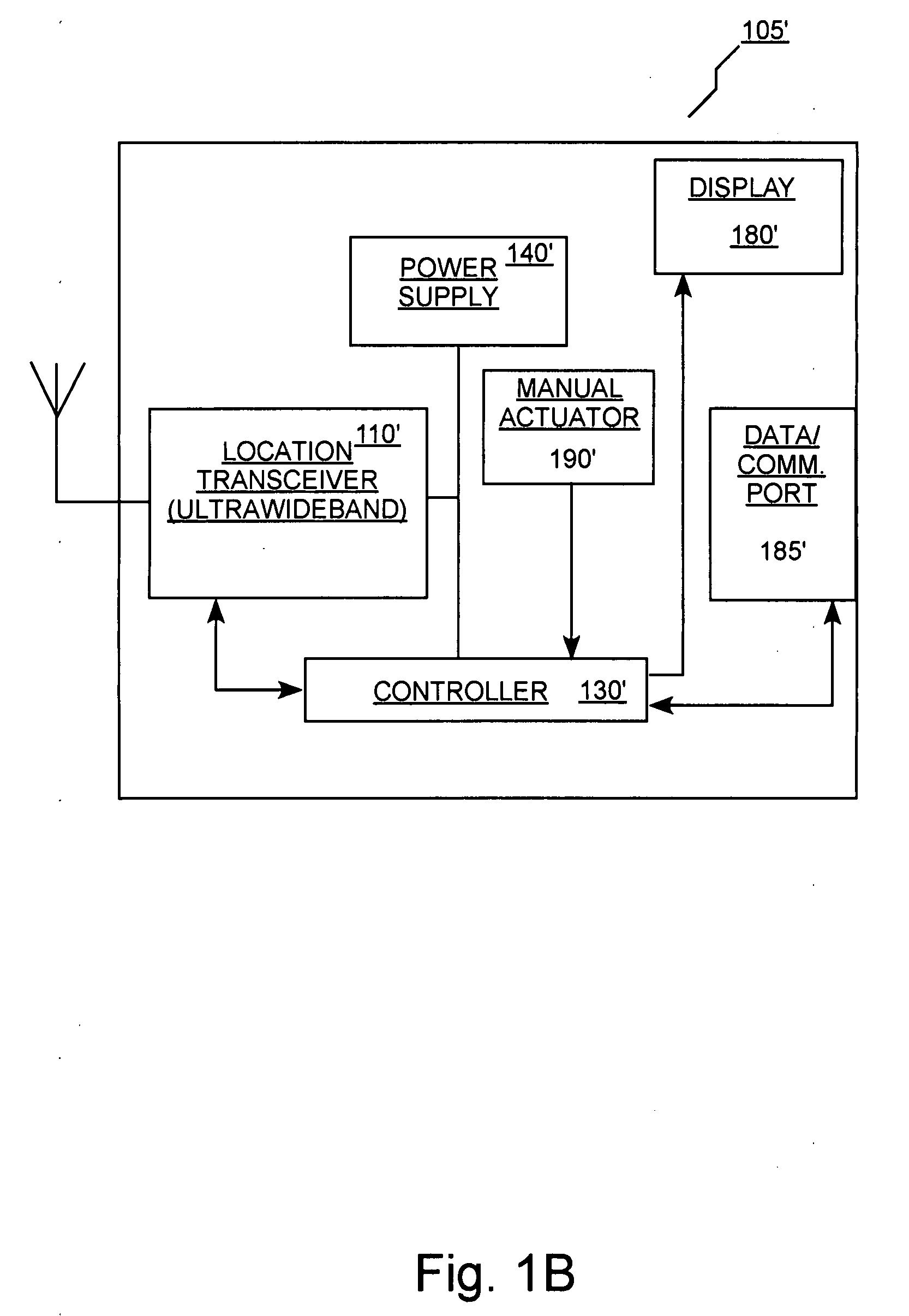Devices, systems and method of determining the location of mobile personnel
a technology of mobile personnel and devices, applied in direction finders, direction finders using radio waves, instruments, etc., can solve problems such as poor signal quality, easy disorientation or separation of firefighters, and easy disassembly and maintenance of personnel
- Summary
- Abstract
- Description
- Claims
- Application Information
AI Technical Summary
Benefits of technology
Problems solved by technology
Method used
Image
Examples
Embodiment Construction
[0036] In several embodiments, the present invention provides locator systems for use in determining the position or location of one or more mobile persons (for example, working in a dangerous or hazardous environment). In several embodiments, such systems include a plurality of mobile locators. Each of the mobile locators is operable or adapted to be associated with (for example, worn by, carried by etc.) one of a plurality of mobile persons. Each of the mobile locators includes a receiver and a transmitter (which can be combined in a transceiver as known in the art) that are operable to receive and transmit, respectively, signals that can be processed to determine the location of the persons. In several embodiments of the present invention, the plurality of mobile locators also forms a communication network wherein periodic signal transmissions provide information regarding the position or location of each of the mobile locators.
[0037] In several embodiments of the present invent...
PUM
 Login to View More
Login to View More Abstract
Description
Claims
Application Information
 Login to View More
Login to View More - R&D
- Intellectual Property
- Life Sciences
- Materials
- Tech Scout
- Unparalleled Data Quality
- Higher Quality Content
- 60% Fewer Hallucinations
Browse by: Latest US Patents, China's latest patents, Technical Efficacy Thesaurus, Application Domain, Technology Topic, Popular Technical Reports.
© 2025 PatSnap. All rights reserved.Legal|Privacy policy|Modern Slavery Act Transparency Statement|Sitemap|About US| Contact US: help@patsnap.com



